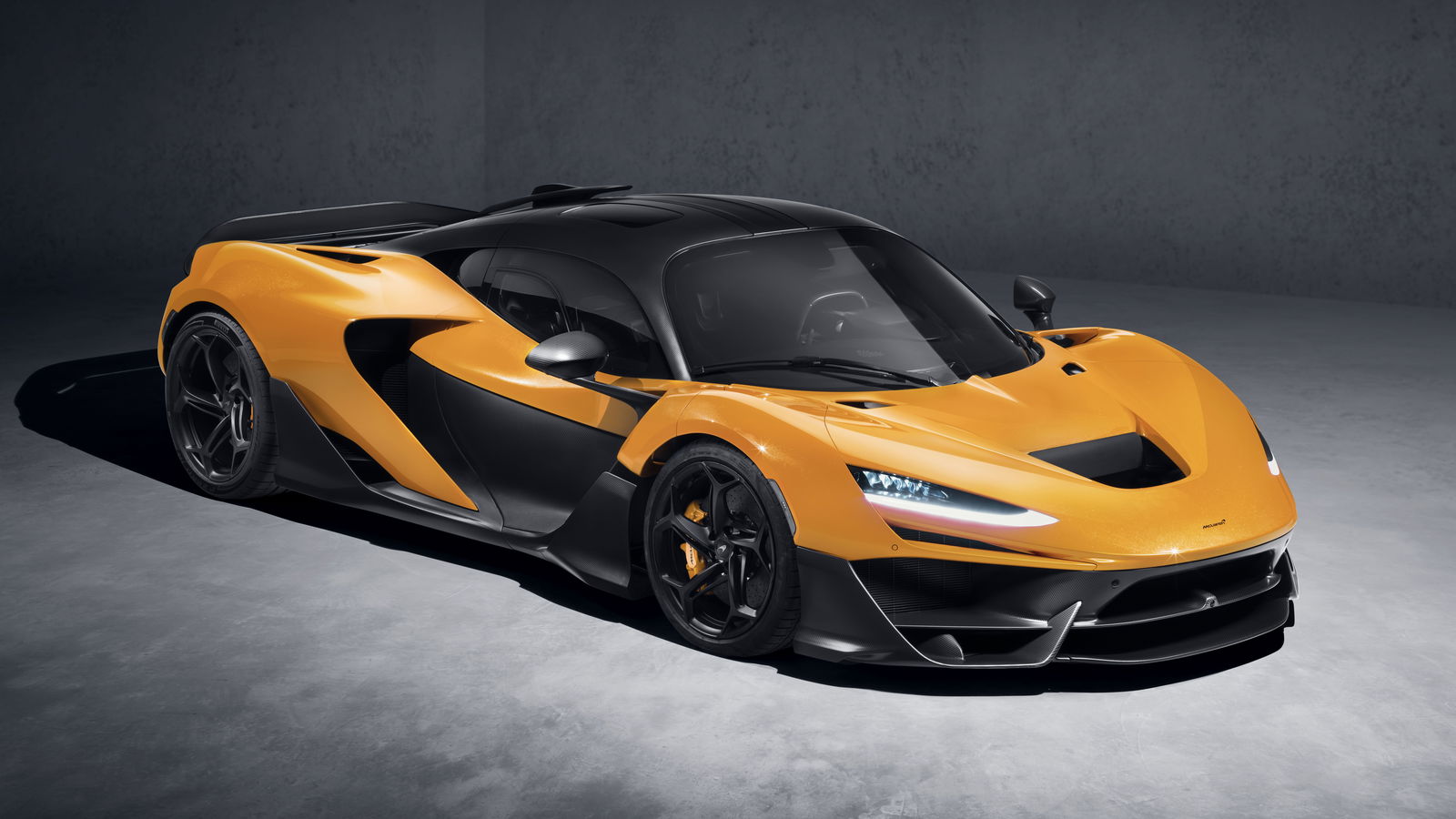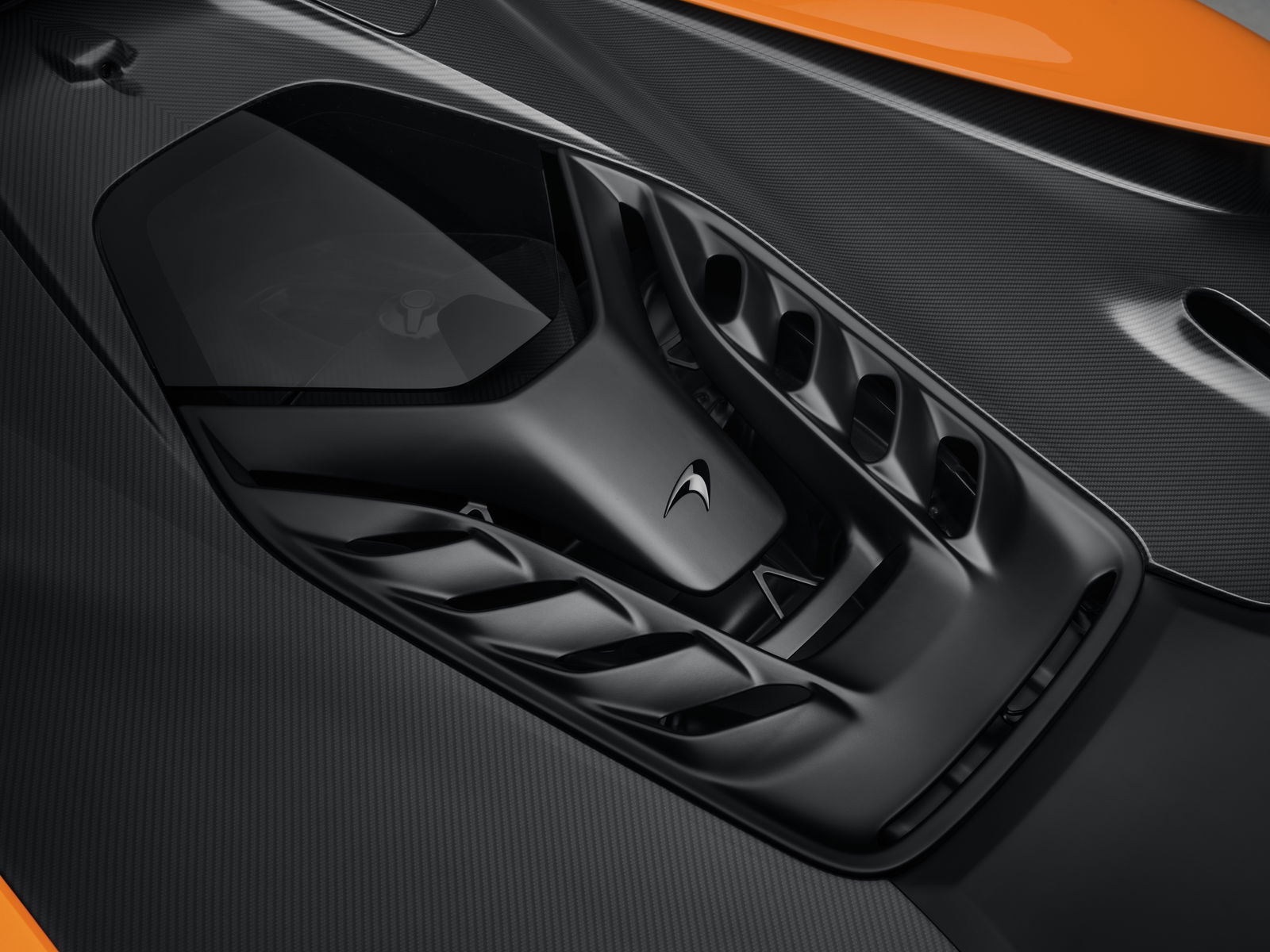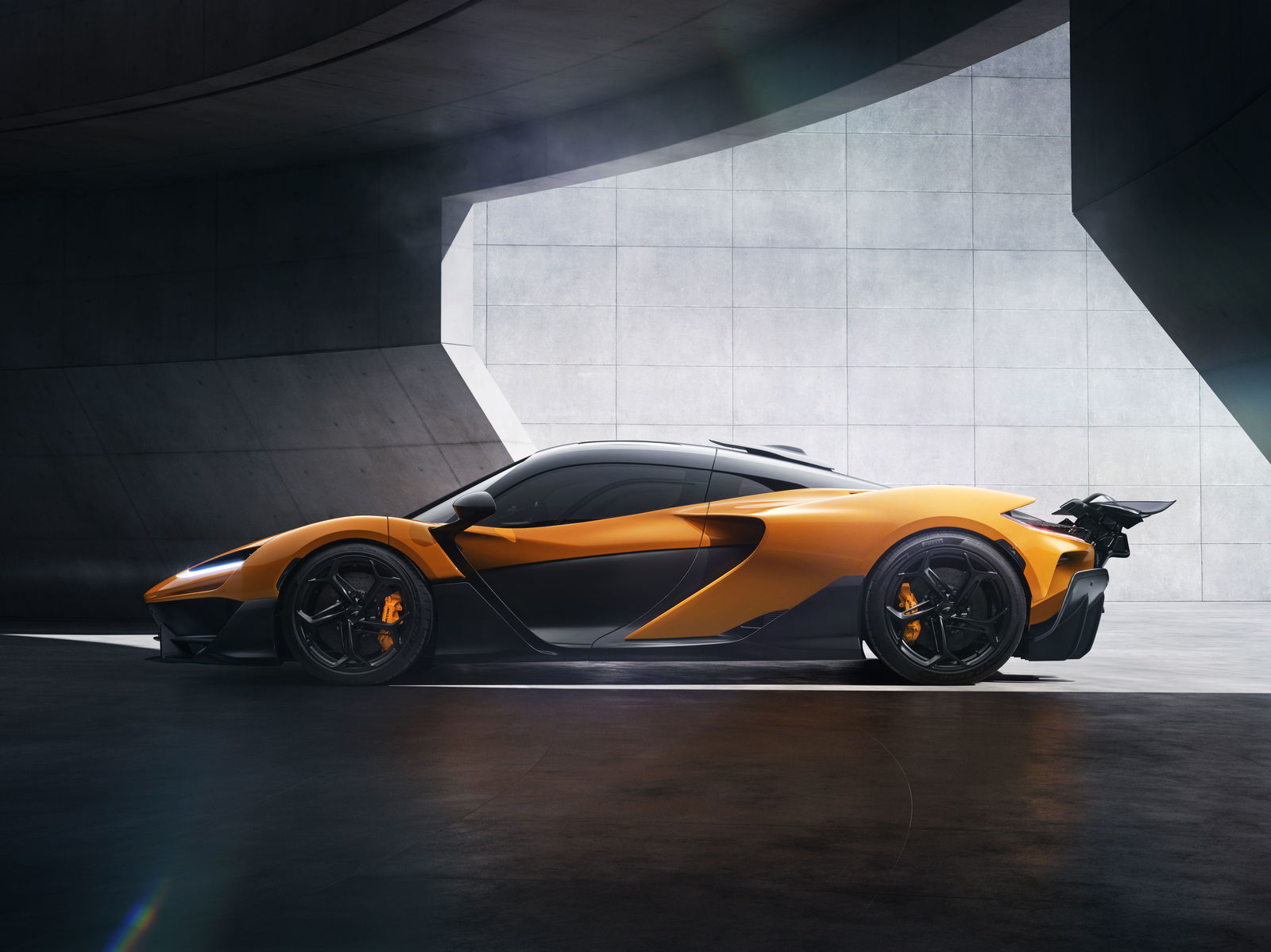7 Amazing Things About The McLaren W1

Over the weekend, the McLaren W1 was unveiled as the third in a line of illustrious hypercars kicked off by the F1 in the ’90s and continued a decade ago by the P1. By now, you’ll have probably digested the headline figures: 1258bhp, 62mph in 2.7 seconds, 217mph, limited to 399 units, £2 million a pop.
There’s an astonishing amount to unpack with this car. The big-brained team behind it have achieved some amazing things in the fields of mechanical engineering and aerodynamics which, quite frankly, our tiny motoring writer minds are struggling to comprehend. If we went through every little detail, we’d be here all week, so instead, we’ve picked out seven fascinating things about the W1, from the major headline bits to the little details.
The V8 engine has levelled up

The W1 is a hybrid, and that headline-grabbing 1258bhp figure is achieved when the engine and 342bhp electric motor are working in harmony. The engine alone, though, is a mighty impressive thing. Like many modern McLarens, it’s a 4.0-litre twin-turbo V8, but it has very little to do with the one that nestles in the 750S and GTS. Codenamed MHP-8, it produces some numbers that would have once been unthinkable for such a relatively compact engine.
On its own, it delivers 915bhp – not far off what the 8.3-litre V16 in the Bugatti Tourbillon makes with literally twice the cylinders and over double the capacity (albeit no forced induction). That means a specific output of 229bhp per litre. That’s not the highest ever, but it’s still noteworthy – it really wasn’t all that long ago that we were lauding any engine that broke the 100bhp per litre barrier.
For a blown engine, it has an incredible appetite for revs too: a redline of 9200rpm. Not many turbocharged engines can exceed this from the factory – all we can think of are the new Lamborghini Temerario, the Czinger 21C and the Mercedes-AMG One, and that last one’s derived from a highly-strung motorsport engine.
It brings ground effect to the party

Ground effect has been around for yonks in motorsport, but it’s only comparatively recently started making its way to road cars in a meaningful way. The Aston Martin Valkyrie puts this aero trick on full display with those massive venturi tunnels that give you an unobstructed view beneath the car from behind, while the GMA T50 takes a bit of a shortcut by using a giant fan to suck the car to the road.
The W1, like the Valkyrie, employs full ground effect in a purer aerodynamic form, but unlike the Valkyrie, it does a remarkable job of hiding it. Much of the underbody effect is created by the shape of the carbon passenger tub. Its integrated seats, raised footwell and adjustable pedal box all help save as much space as possible so there’s more room beneath to create that low-pressure zone that sucks the car to the ground. This is maximised with the car in race mode, which drops the ride height by 17mm at the rear and some 37mm at the front. A lot of the actual science behind this hurts our brains, but we can understand the effect: it contributes to a total of 1000kg of downforce in high-speed cornering. What McLaren counts as ‘high-speed’, we don’t know, but it’s accepted that modern F1 cars make around 750kg at 100mph.
The gullwing doors aren’t just for showing off
.jpg?width=1600)
For the W1, McLaren has ditched its preferred dihedral butterfly doors for some 300SL-style gullwing items. These aren’t so you can make a particularly spectacular entrance when you roll up to the Place du Casino, though. Well, they are partly, but there’s a lot more going on.
By hinging the doors up top, McLaren has been able to optimise the flow of the air that’s channelled through the front wheel arches and into the rearward radiators that help cool the powertrain. It would have never crossed our mind that the kind of doors you use could have that much impact on aero performance. Guess that’s why we’re not aerodynamic engineers.
The wing helps with ground effect
 copy.jpg?width=1600)
On most cars that feature them both – modern F1 cars, for instance – ground effect and a big rear wing contribute to downforce in different ways. A wing helps push the car onto the road, while ground effect pulls it down towards it. On the W1, though, the rear wing actually contributes to the overall ground effect.
In race mode, when it slides back by 300mm, it sits out above the road surface rather than the car’s bodywork. This both keeps it clear of the air coming out of the W1’s engine bay, but also allows it to effectively act as an extension to the rear diffuser, helping it to drag more air out through the car’s underside and suck it more firmly into the road.
The seats light up
 copy 2.jpg?width=1600)
One of the centrepieces of the W1’s interior is InnoKnit, a new, lightweight knitted upholstery option. No, seriously. It not only helps cut down on weight and waste by being tailored specifically to the car’s seats, but it also allows for pretty much endless interior personalisation options.
McLaren has also integrated optical elements into it, meaning it can diffuse ambient lighting out into the cabin. We like to imagine that somewhere in the McLaren Technology Centre, there’s a space decked out as a cosy living room in which a kindly grandmother is knitting this clever stuff together for each of the 399 W1s.
It still has hydraulic steering
 copy 3.jpg?width=1600)
For all the staggering technology going on in the W1, there’s one area where McLaren continues to believe that the old ways are the best: power steering. It’s pretty much the only manufacturer left still using a hydraulic system – albeit one driven off an electric motor rather than the engine.
Electric power steering has come leaps and bounds in recent years, but there’s still something to be said for the sheer clarity offered by a hydraulic system, and McLarens still tend to offer some of the most beautifully talkative steering among their supercar peers. It’s admirable to see that continue even in a car as otherwise tech-heavy as the W1.
It has carbon fibre sun visors
 copy 4.jpg?width=1600)
McLaren’s made a lot of noise about its lightweight-ing efforts with the W1, and is touting a dry weight of 1399kg. It’s not exactly an Elise, then, but for something with a lot of electric gubbins on board, it’s pretty impressive – although we don’t know how much some fluids and a couple of people will add.
In its quest to keep weight down, McLaren has left very few stones unturned, even making the sun visors out of carbon fibre, and keeping them just 3mm thick. That’s the sort of luxury you can afford when you’re building just 399 cars and selling them for £2 million a piece.

.jpg?width=1600)

Comments